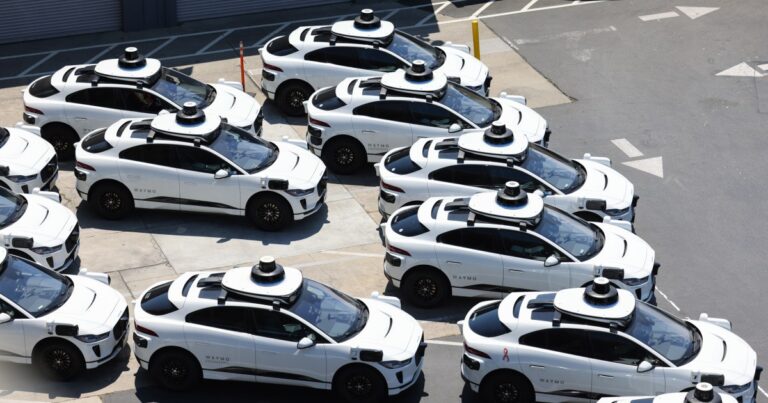“`html
Introduction: The Rise of Robotaxis in 2024
The year is 2024, and the landscape of urban transportation has transformed significantly, particularly in cities like San Francisco where autonomous vehicle technology has taken center stage. Waymo, the robotaxi service owned by Alphabet, has emerged as a dominant force in this sector. Once a topic surrounded by skepticism and hesitation, the acceptance of driverless cars appears to have reached a tipping point, indicating a significant shift in public sentiment towards this technology.
A Shift in Perception
Surprisingly, the change in perception surrounding robotaxis is palpable. Many individuals—including myself—have transitioned from vehemently opposing these vehicles to embracing them as a viable mode of transportation. Initially skeptical of the realities of riding in a self-driving vehicle, I found myself taking over 50 rides within just a few months, spending over $1,000 in the process. This shift in attitude reflects a noteworthy trend, as skeptical views have given way to a newfound appreciation for the convenience and novelty that these vehicles offer.
Statistics and Growth in Ridership
While Waymo has opted not to disclose specific ridership statistics, anecdotal evidence suggests a substantial increase in users since the service was made available to the public in June 2024. Conversations with fellow San Franciscans and interaction with visitors confirm that an increasing number of people are climbing aboard these autonomous vehicles. The sudden surge in popularity indicates that the services offered by Waymo are being embraced by a variety of demographics, particularly urban dwellers and tech enthusiasts alike.
Recognition of Waymo’s Presence
According to a representative from Waymo, since the launch of their service to everyone in San Francisco, the city has experienced unprecedented growth in ridership numbers. “San Francisco has become the fastest-growing city and the city with the most weekly trips of any Waymo city,” the spokesperson stated. This acknowledgment speaks volumes to the effective rollout and management of their robotaxi services, which seem to resonate with residents seeking an alternative to traditional transportation options.
Surprising Acceptability of Autonomous Vehicles
The rapid integration of driverless cars into our daily routines has been highly unexpected. For a long time, the idea of utilizing an autonomous vehicle felt like a far-fetched concept, something I actively campaigned against. However, as the technology has advanced and the vehicles have become more reliable, my apprehension has shifted. These once-resented “metal beasts” have transformed into a preferred method of transit for many, including myself. This stark contrast highlights a fascinating shift within the public consciousness regarding adaptive technology.
Understanding the Human Connection with Technology
It is not merely the technology itself that captivates the public, but also the human connection fostered through these experiences. The excitement shared when introducing friends and family to Waymo’s services underscores a broader cultural acceptance of integrating autonomous solutions into our lives. The alluring nature of technology now extends beyond its inherent functionalities; it has become woven into social interactions and lifestyle choices, further bridging the gap between humans and machines.
Conclusion: Navigating the Future with Robotaxis
The acceptance of robotaxis marks a significant milestone in the ongoing narrative surrounding autonomous technology. As we steadily move towards a future where driverless vehicles may become commonplace, it is essential to analyze not only the technological advancements but also the human narratives intertwined with these developments. The journeys taken in Waymo vehicles are more than just transportation; they reflect evolving perceptions of safety, convenience, and innovation within our society. As the robotaxi revolution continues, it is clear that the roads of our cities will be shared with ever-growing fleets of autonomous vehicles, fundamentally altering our transportation landscape.
FAQs
What is Waymo and how does it operate?
Waymo is a subsidiary of Alphabet Inc. that develops and operates autonomous driving technology. Its robotaxi services allow passengers to request rides using a mobile app, with vehicles navigating city streets without human drivers.
Are the rides safe in autonomous vehicles like those from Waymo?
Waymo has undertaken extensive testing to ensure the safety of its vehicles. The technology employs a range of sensors and software to navigate and respond to changing traffic conditions, but safety is always an ongoing consideration as the technology evolves.
How can I access Waymo’s services?
Riders can access Waymo’s robotaxi services by downloading the Waymo app and requesting a ride. Availability may depend on the city and specific service parameters that Waymo has implemented.
What are the benefits of using robotaxis like Waymo?
Benefits include convenience, reduced transportation costs, no need for parking, and easier access to rides in congested urban areas. Additionally, robotaxis can provide alternative transport options for those without a driver’s license or access to a vehicle.
Will robotaxis replace traditional taxis and rideshares?
While it is difficult to predict the future, the growth in robotaxi services indicates a possibility of coexistence between traditional taxis, rideshares, and autonomous services. Market demand will likely dictate how these transportation methods evolve together.
“`



